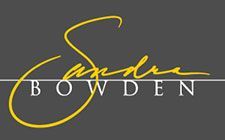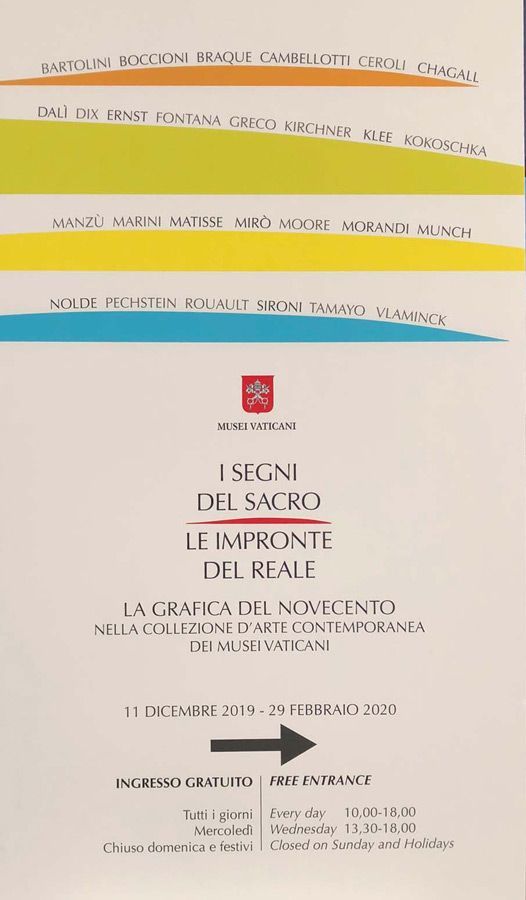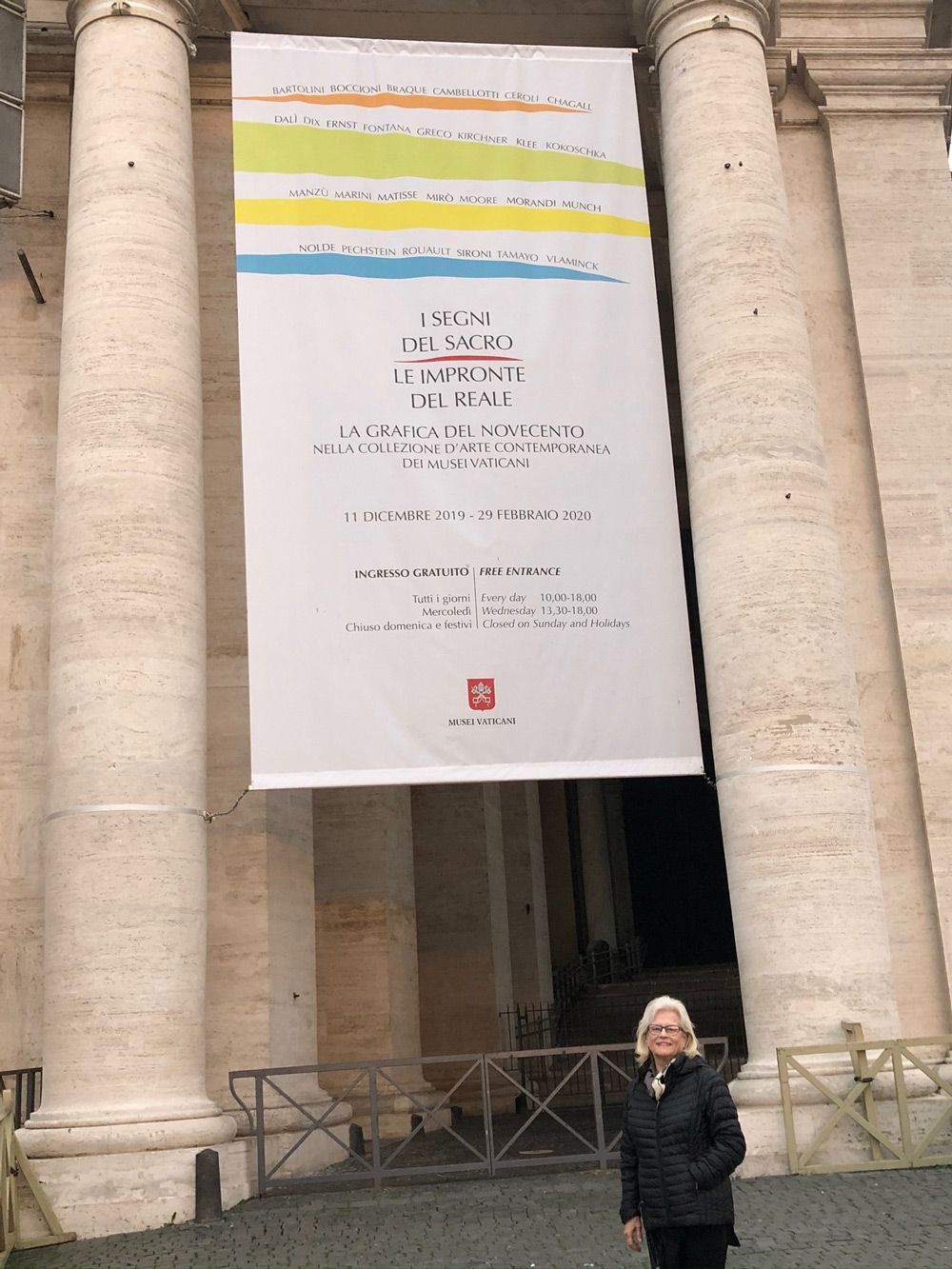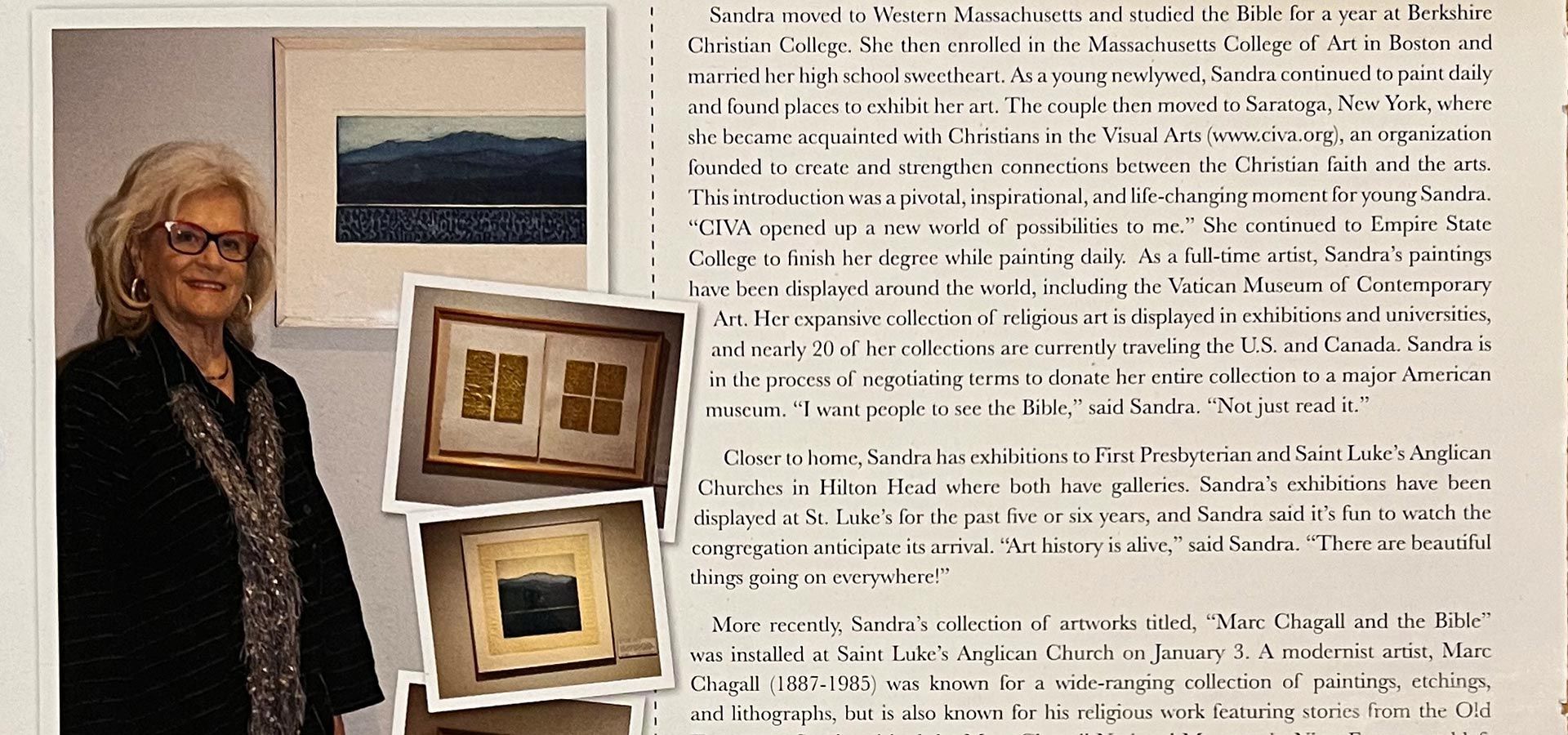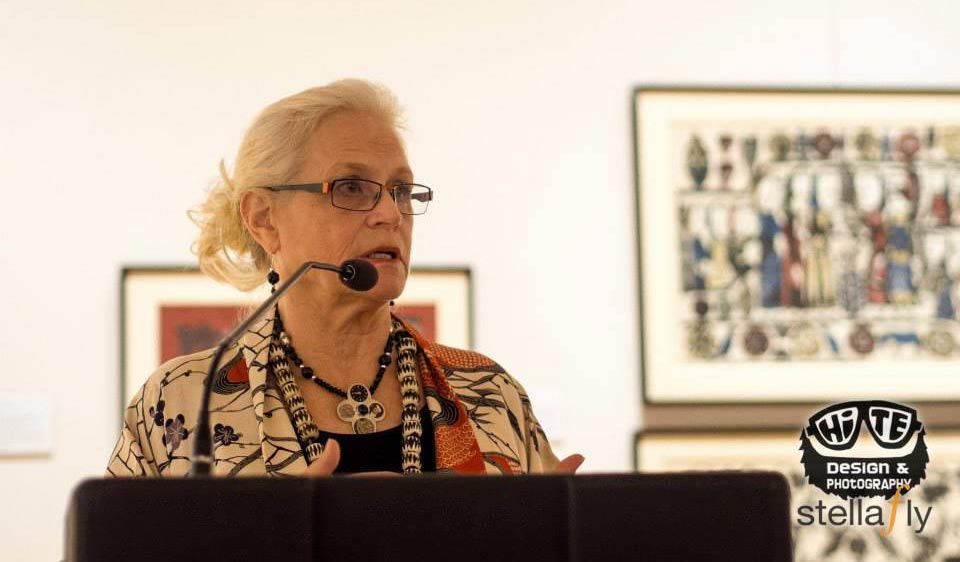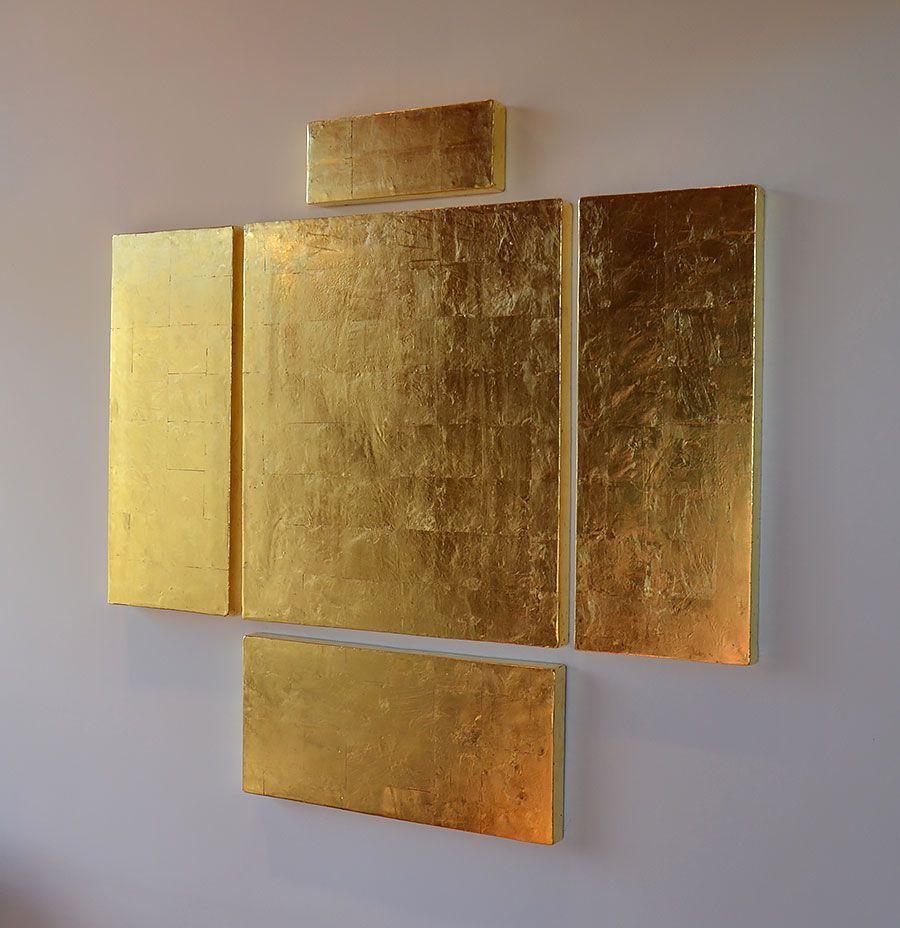The Signs of The Sacred – The Imprints of The Real
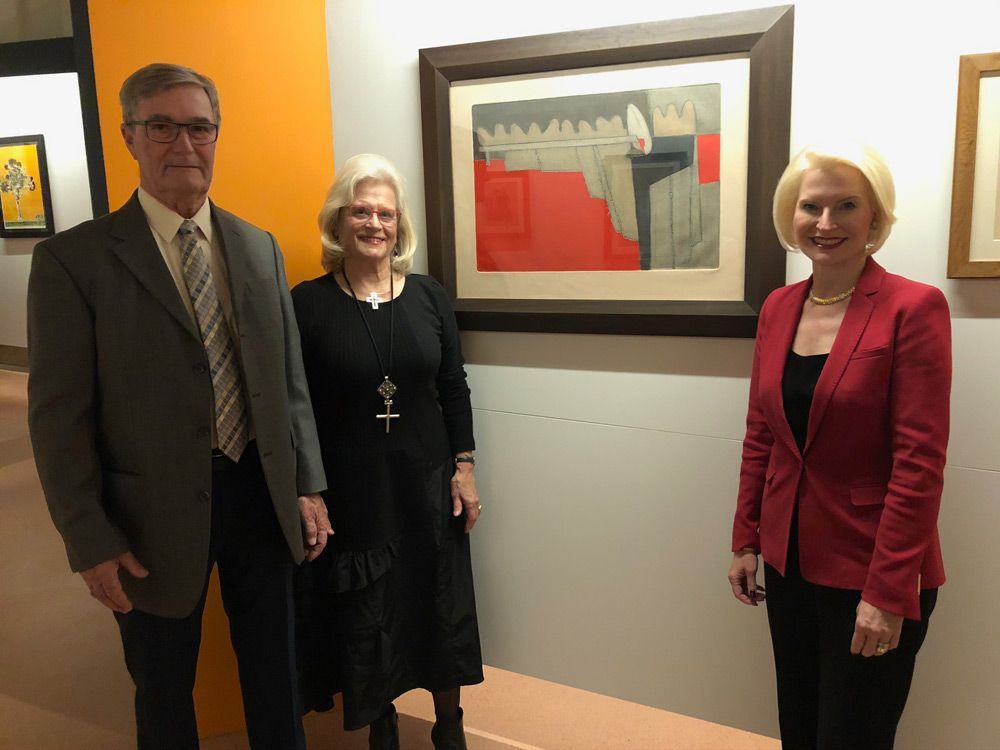
In the monumental spaces of Bernini's Braccio di Carlo Magno THE SIGNS OF THE SACRED – THE IMPRINTS OF THE REAL. Twentieth-century Graphic Arts in the Contemporary Art Collection of the Vatican Museums opens on Tuesday 10th December 2019, at 5.30 p.m. The exhibition, curated by Francesca Boschetti with the coordination of Micol Forti, Head of the Contemporary Art Collection of the Vatican Museums, invites the public to amazement and discovery.
Amazement: graphic arts, usually considered a field for specialists and experts, is indeed a privileged "observatory" to get to know the artists and appreciate their most innovative and experimental aspects. Especially in the twentieth century, the practice of engraving became a "place" of research that involves not only the procedures and materials but also the exploration of iconography and style. Each artist chooses one or more techniques - woodcut, etching, aquatint, drypoint, lithograph, silk-screen print - and measures himself with them to reach the desired result or to discover new solutions in the definition of the image on the matrix. A matrix that, through the printing process, transfers the signs onto the paper like a mirror.
Discovery: the exhibition presents for the first time an extraordinary selection of about 150 graphics, mostly unpublished, selected from about four thousand works that make up the entire collection of prints, engravings, drawings and photographs of the nineteenth and twentieth centuries of the Vatican collections. A "hidden treasure" whose life, stored in folders and protected from light, is normally far from the eye of the public.
Founded in 1973, in parallel with the creation of the section dedicated to the twentieth-century art desired and inaugurated by Pope Paul VI, the twentieth-century graphic art collection is a young and anomalous collection. In fact, it is not the result of the will of a collector, who chooses and collects the individual sheets with an overall idea to be constituted and enriched progressively, but rather a natural and spontaneous consequence of Pope Montini's "call" to the world of art to reconnect the historical link between the Church and contemporary culture. The rich nucleus of papers is, in the beginning, the result of the response of artists, heirs, and patrons, who personally gave the Pontiff prints and drawings, then merged into the Vatican collections. From the death of Paul VI onwards, the increase of the collection follows different criteria and the acquisitions are aimed at filling gaps in the existing historical nuclei, while maintaining a continuity with the original idea of giving witness to contemporary spirituality.
Preserved in special conditions of light, humidity, and temperature, the artworks on paper occupy very limited space in the Vatican Museums, where only a few units are visible in rotation. For this reason, the exhibition is a special occasion to see up close masterpieces by Edvard Munch, Paul Klee, Otto Dix, Max Ernst, Oskar Kokoschka, Umberto Boccioni, Giorgio Morandi, Felice Casorati, Piero Dorazio, Marc Chagall, Joan Miró, Henri Matisse. These artworks are sometimes accompanied by paintings and sculptures by the same artists or other authors, who have iconographic or chronological connections with the prints. A closeness that aims to underline the osmosis between graphic art and expressive languages considered "major".
Precisely because of the heterogeneity and richness of the artworks that compose it, the exhibition was conceived as a circular narration that begins with the Creation of the World and ends with the creation of the artwork. The exhibition itinerary, underlined by the set-up of the architect Roberto Pulitani, is divided into four sections: The Sentiments of the Sacred and the Human, The Imprints of the Real, Origin of an Idea and Sign and Colour.
The Sentiments of the Sacred and the Human includes subjects inspired in large part by the Holy Scriptures taken from the Old and New Testaments, highlighting the wide range of human feelings contained in religious iconographies. The Genesis, the life of Christ, from the Motherhood of the Virgin to the Apocalypse, take form in the graphics of the Catalans Joan Miró and Joan Josep Tharrats, in the powerful woodcuts by the expressionists Max Pechstein, Karl Schmidt-Rottluff and in the refined engravings of Felice Casorati, Sigfrido Bartolini, Rufino Tamayo, up to the stereoscopic Crucifixion by Salvador Dalí: two lithographs designed to be viewed with a special viewer that makes the image three-dimensional. The section focuses on the universality and actuality that some themes bring with them.
Georges Rouault, Marc Chagall, Marino Marini, Renato Guttuso, Guido Strazza in the years of the two world wars, use sacred iconographies to give voice and face to the injustices and sufferings of war. The Martyrdom by Lorenzo Viani tells the laic drama of the deaths in the sea through a sequence of images that recall the martyrdom of Christ and at the same time evoke the shipwrecks that happen at any time and in any place.
Vatican Exhibit BannerThe section The Imprints of the Real opens a glimmer on the wonder that activates in the careful and sensitive observation of the concrete details of everyday life, whether it be a still life, a tree, a city view. Emil Nolde, Ernst Ludwig Kirchner, Giorgio Morandi, Luigi Bartolini, Carlo Mattioli, Duilio Cambellotti, Anselmo Bucci are some of the artists in this section.
The third thematic line Origin of an Idea gives an insight into the delicate and precious moment, that of the creative process, when the idea of the artist begins to take shape and the creation of a work begins. Papers, plaster and bronze sketches tell the evolution and the stages of the creative path of artists such as Mario Sironi and Umberto Boccioni, Giacomo Manzù, Pericle Fazzini and Cecco Bonanotte and Santiago Calatrava.
Finally, the Sign and Colour section brings together mainly abstract works that show a range of possible solutions conceived from the dialogue between these two founding elements of the pictorial and graphic language. Among the interpreters of a personal re-elaboration of the vision of the world are Georges Braque, Hans Hartung, Lucio Fontana, Fausto Melotti, Venturino Venturi, Kazimierz Głaz.
The exhibition is accompanied by the catalogue published by Edizioni Musei Vaticani, with texts by Francesca Boschetti, Micol Forti, Barbara Jatta, Giorgio Marini, Giuseppe Trassari Filippetto.
